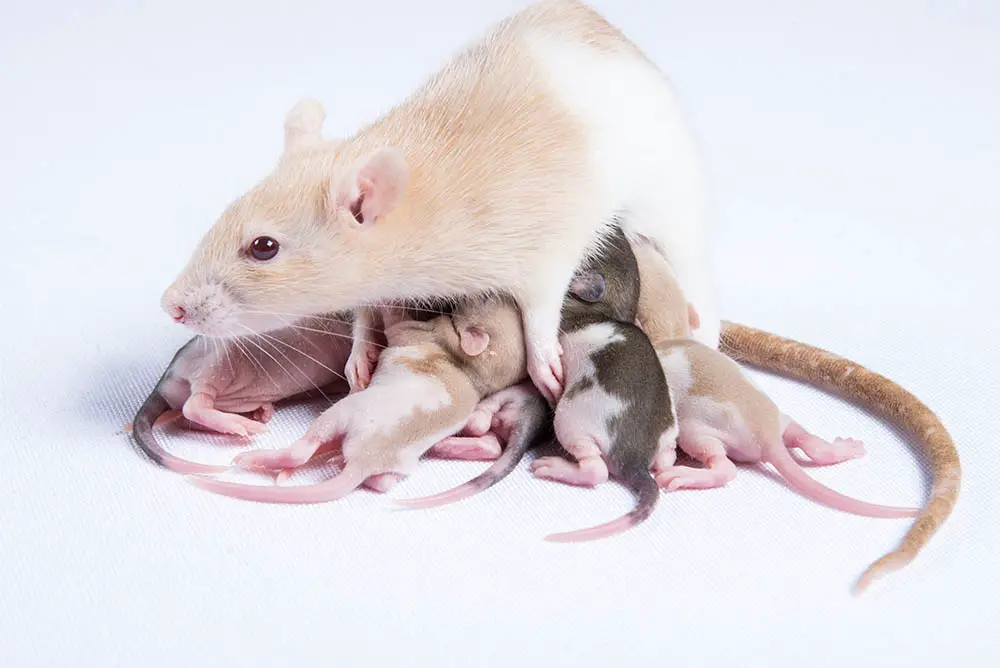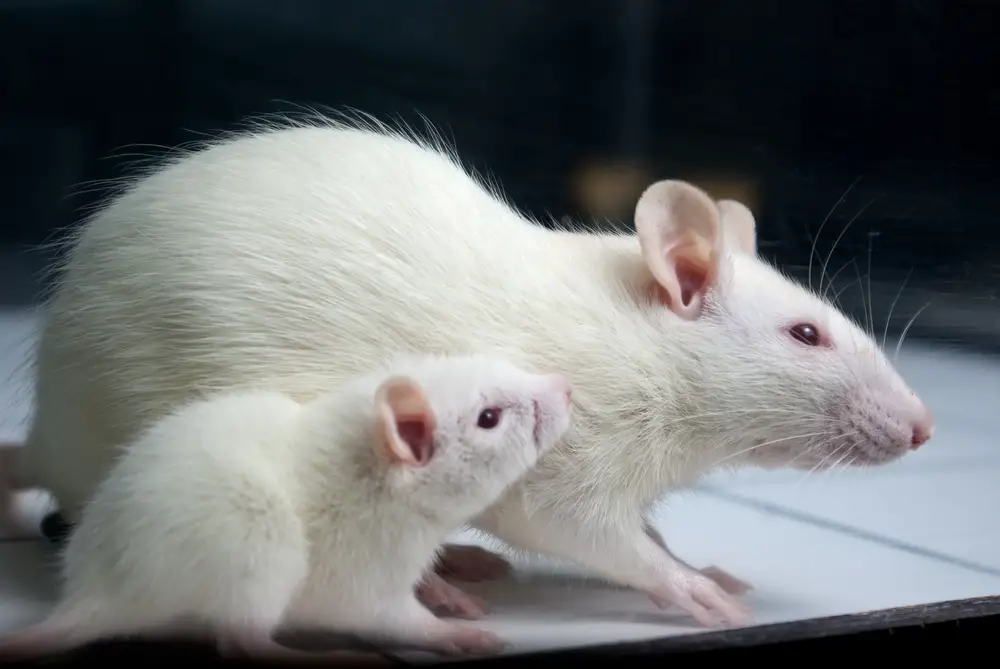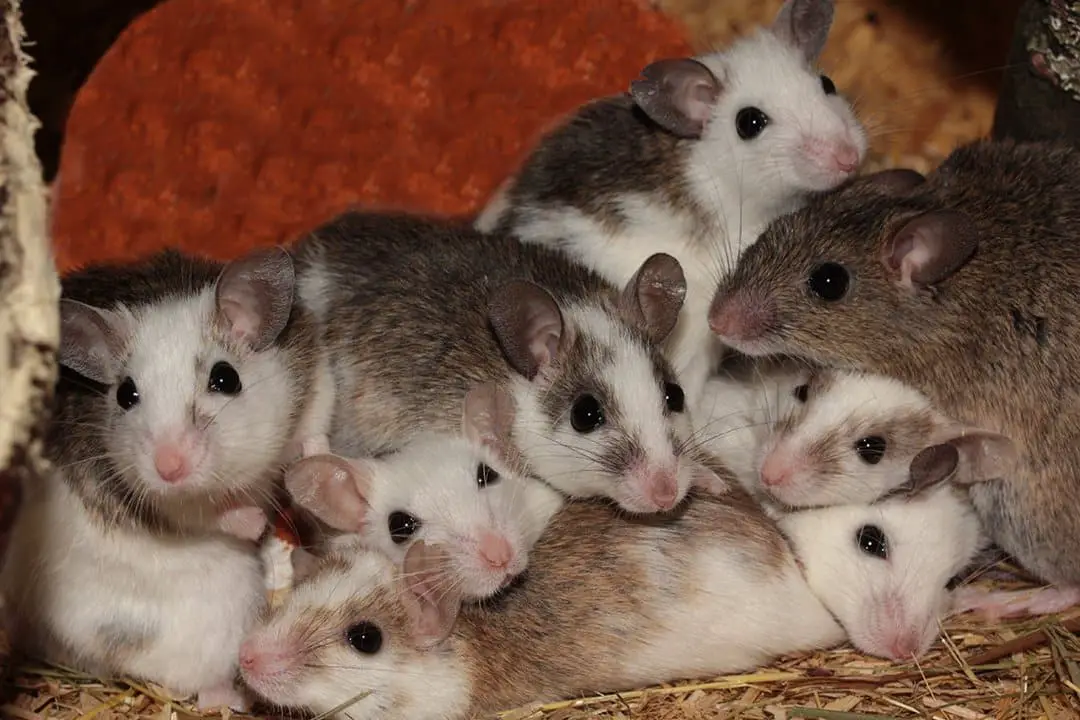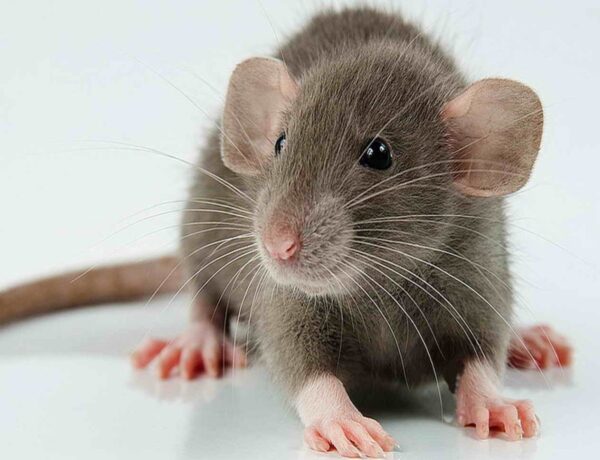Introduction
How Many Babies Do Rats Have: Rats, often regarded as pests and carriers of diseases, are remarkable creatures when it comes to reproduction. Rats are prolific breeders, and their reproductive capabilities have fascinated scientists and researchers for centuries. Rats nocturnal belong to the family Muridae and are found in various species across the globe. These rodents have adapted and thrived in a wide range of environments, from urban settings to rural landscapes, and their ability to reproduce quickly is one of the key factors contributing to their success. To delve into the intricacies of rat reproduction, it is crucial to understand their reproductive biology. Rats are known for their ability to reproduce at a rapid pace, with females reaching sexual maturity as early as five weeks of age.
Once a female rat is ready to mate, she can conceive almost immediately, leading to a continuous cycle of pregnancies if conditions are favorable. The gestation period of rats is relatively short, typically lasting about 21 to 23 days. After this brief period, a female rat gives birth to a litter of baby rats, known as pups. The number of pups in a litter can vary depending on several factors, including the age and health of the mother, environmental conditions, and the availability of resources like food and shelter. On average, a rat litter consists of 6 to 12 pups, but it is not uncommon for a single female to produce as many as 20 or more offspring in a single litter under optimal conditions.
This impressive reproductive capacity can lead to exponential population growth in a relatively short period. In areas where rats are considered pests, such as homes, farms, or urban settings, understanding their reproductive habits is crucial for effective pest control and management. Rat reproduction, we will delve deeper into the factors that influence litter size, the unique aspects of rat parenting, and the broader implications of their prolific breeding habits. You will have a comprehensive understanding of how many babies rats can have and the significance of their reproductive prowess in the animal kingdom and our daily lives.

How quickly do rats multiply?
A female rat typically births six litters a year consisting of up to 12 rat pups, although 5-10 pups are more common. Rats reach sexual maturity after nine weeks, meaning that a population can swell from two rats to around 1,250 in one year, with the potential to grow exponentially.
Short Gestation Period: One of the key factors that enable rats to multiply quickly is their short gestation period. Female rats, also known as does or dams, typically have a gestation period of 21 to 23 days. This brief pregnancy means that a pregnant rat can give birth to a new litter of pups every three weeks or so under ideal conditions.
Large Litters: Another contributing factor is the size of rat litters. On average, a rat litter consists of 6 to 12 pups, but it’s not uncommon for a single female to give birth to as many as 20 or more offspring in one litter. The combination of a short gestation period and large litter size results in a high potential for exponential population growth.
Early Sexual Maturity: Rats reach sexual maturity at a remarkably young age. Female rats can become sexually active as early as five weeks old, while males, called bucks, can also mate at a young age. This means that rats can start reproducing almost as soon as they are weaned from their mother’s milk.
Continuous Reproduction: Rats have the capacity for continuous reproduction throughout the year, provided they have access to ample food, water, and shelter. Unlike some animals that have specific breeding seasons, rats can reproduce consistently, leading to a constant cycle of pregnancies and births.
How many baby rats does a female have?
The usual litter size is 8 to 18 pups. Baby rats are born deaf and blind. The cage should be kept in a quiet place and the litter should not be disturbed for at least 7 days after birth, especially if this is the female’s first litter.
Litter Size Variability: The number of baby rats, or pups, in a single litter can vary significantly among rat species and even among individual females. On average, a rat litter consists of 6 to 12 pups, but it’s essential to note that this is a general range, and litters outside this range are not uncommon.
Species Differences: Different species of rats may have slightly different litter sizes. For example, the brown rat (Rattus norvegicus) and the black rat (Rattus rattus), two of the most common rat species, tend to have litters within the average range mentioned above. However, some species may have smaller or larger litters.
Age and Health of the Female: The age and overall health of the female rat play a significant role in determining litter size. Younger, healthier females often have larger litters. Older or malnourished females may produce smaller litters with fewer pups.
Environmental Factors: The environment in which the female rat lives can also impact litter size. Rats in areas with abundant food, water, and shelter are more likely to have larger litters. Adequate nutrition is crucial for supporting a healthy pregnancy and the development of a robust litter.
How many babies do rats have a week?
Once rats reach sexual maturity, they will start cycling through litters every 4 – 8 weeks, producing between 6-12 babies in each litter. The full-term gestation period is roughly 21 days with only 1 -2 days necessary to recover and breed before becoming pregnant with the next litter.
Gestation Period: The gestation period of a rat, which is the time between fertilization and birth, usually lasts for approximately three weeks. This means that after mating, it takes about 21 to 23 days for a pregnant female rat to deliver her litter.
Litter Size: The number of pups in a rat litter can vary, with an average range of 6 to 12 pups. This number is not set in stone and can be influenced by several factors, including the age and health of the female, environmental conditions, and genetics.
Mating and Reproduction: Female rats, also known as does or dams, can become sexually active as early as five weeks of age. They can mate shortly after reaching sexual maturity, and once pregnant, they will give birth to a litter after the gestation period.
Post-Birth Recovery: After giving birth, female rats require time to recover and care for their pups. During this period, which typically lasts a few weeks, they do not mate or give birth to additional litters. This maternal phase is critical for the survival and well-being of the newborns.
What do baby rats eat?
What Do Baby Rats Eat? Newborn baby rats drink their mother’s milk for around three weeks. After that, they can eat solid food but may continue to nurse for several more weeks while they learn about other foods. Baby rats then transition into an adult diet.
During the first few weeks of their lives, baby rats exclusively feed on their mother’s milk. Rat mothers produce milk rich in essential nutrients, including proteins, fats, carbohydrates, and antibodies. This milk provides vital nourishment and helps the pups grow rapidly.
At around three weeks of age, baby rats begin to transition to solid food. This process is gradual and may vary among individuals. During this stage, they still rely on their mother’s milk but start nibbling on solid foods that are available in the nest or cage. These solid foods may include softened pellets or specially formulated rat food.
The weaning process typically takes place between four to five weeks of age. During this period, baby rats become less dependent on their mother’s milk and start consuming more solid food. It’s crucial to provide a well-balanced diet during this time to support their growth.
Keep an eye on the growth and development of baby rats. If you notice any issues, such as slow growth or weight loss, consult a veterinarian who specializes in small animals for guidance on adjusting their diet or addressing potential health concerns.
Can a 2 year old rat get pregnant?
You can’t count on a female being completely infertile until she is 2 years old. Before deciding to breed your rats, you should consider a few things. Do not breed rats who have or have had active mycoplasma infections.
Early Maturity: Female rats, also known as does, can reach sexual maturity as early as five weeks of age. This means they can become pregnant and give birth to litters of baby rats (pups) quite quickly after birth.
Prime Reproductive Age: Rats are generally considered to be in their prime reproductive age from around 3 to 6 months old. During this period, they are more fertile and better equipped to care for their offspring.
Decreased Fertility: As rats age beyond their prime reproductive age, their fertility can start to decline. This means that while a 2-year-old rat may still be capable of getting pregnant, her chances of successfully conceiving and carrying a healthy litter to term are lower compared to when she was younger.
Age-Related Health Issues: Just like any other living creature, rats can develop age-related health problems. These issues can affect a 2-year-old rat’s ability to handle the physical demands of pregnancy and caring for newborns.
How long do baby rats live?
From birth to adult, rats take about three weeks to mature and begin fending for themselves. The rodents reach sexual maturity in about five weeks and begin mating soon after to produce the next generation to start the rat life cycle over again. Life expectancy for rats is about two to three years.
During the neonatal stage, baby rats are entirely dependent on their mother’s care and milk for nourishment. Their eyes and ears are closed, and they are not yet mobile. Unfortunately, the mortality rate during this stage can be relatively high due to factors such as insufficient maternal care, congenital issues, or environmental stressors. Baby rats that survive this stage typically live to be about 2 weeks old.
Baby rats transition to eating solid food and gradually become more active during this stage. They are weaned from their mother’s milk, and their eyes and ears open. Rats in this stage are generally quite active and curious. Mortality rates decrease significantly compared to the neonatal stage, and they can be expected to live to be about 5 weeks old.
As baby rats grow into adolescence, they continue to develop both physically and behaviorally. Their lifespan during this phase can vary widely depending on factors like genetics and the quality of care they receive. Rats in well-maintained environments with proper nutrition and healthcare can live to be about 12 weeks old or longer.
Rats are considered adults at around 3 to 4 months of age. Their lifespan during adulthood can vary greatly, but with proper care, they can live anywhere from 2 to 3 years on average. Some rats have been known to live even longer, up to 4 or 5 years, although this is less common.
Do rats mate for life?
Brown rats will breed year round and each female can produce four to six litters a year. Texas rats are not monogamous so a male will impregnate as many females as possible at one time.
Rats are not known to form long-term, monogamous pair bonds. In other words, they do not establish exclusive relationships with a single mate for the duration of their lives. Instead, they engage in promiscuous mating, where both males and females mate with multiple partners.
Rats have a strong biological drive to reproduce and pass on their genetic material. This drive leads them to seek out multiple mating opportunities, which increases their chances of passing on their genes to the next generation.
In the wild, male rats often compete with each other for access to females during the breeding season. This competition results in multiple males mating with one or more receptive females. It’s a strategy that ensures genetic diversity and the survival of their offspring.
Rats have relatively short lifespans, particularly in the wild, where they face numerous predators and environmental challenges. This short life expectancy makes it impractical for them to form long-term pair bonds.
How big is a newborn rat?
Small size – A baby rat is no larger than an eraser head or golf ball when it’s born, so if you find something smaller than this it’s probably not an adult rat. Blue-gray colouring – Baby rats have very dark eyes and ears that are covered with fur until they get older and begin growing hair on them.
Newborn rat pups typically measure about 2.5 to 3.5 inches (6 to 9 centimeters) in length from the tip of their nose to the base of their tail. The tail itself is usually quite short and underdeveloped at birth.
The weight of a newborn rat pup can vary based on factors such as the mother’s health and nutrition during pregnancy and the number of pups in the litter. On average, a baby rat weighs approximately 5 to 7 grams (0.18 to 0.25 ounces) at birth. This weight may increase slightly as the pup feeds on its mother’s milk.
Newborn rat pups are born with closed eyes and ears. Their skin is pink and nearly hairless, although some sparse, fine hairs may be present. They have a rounded, slightly wrinkled appearance due to their developing bodies and lack of fur.
As they grow and develop, rat pups go through several stages. Their eyes and ears gradually open between days 12 to 15 after birth, and they begin to explore their surroundings and show signs of increased activity.

Conclusion
Rats, with their rapid breeding capabilities, exemplify the age-old adage “breeding like rats” due to their prolific nature and remarkable ability to reproduce under various conditions. Understanding the intricacies of rat reproduction is not only a matter of scientific curiosity but also holds practical significance in pest control and ecological contexts. The key takeaway from our exploration is that rats are indeed prolific breeders, with the potential to produce large litters of pups in a relatively short span of time. Factors such as the age and health of the mother, environmental conditions, and the availability of resources play pivotal roles in determining litter size.
This reproductive capacity has significant implications for human society. In urban areas, the unchecked proliferation of rats can lead to infestations, property damage, and the transmission of diseases. Understanding their reproductive habits is essential for implementing effective pest control measures and preventing potential health hazards. Moreover, rats babies reproductive prowess underscores their adaptability and resilience as a species. Their ability to thrive in diverse environments and reproduce rapidly has enabled them to colonize various habitats worldwide. This adaptability makes rats a valuable subject of study in ecological research, shedding light on the ways in which wildlife responds to changing landscapes and human activities.
In the broader context of the animal kingdom, the reproductive strategies of rats provide valuable insights into evolutionary biology and survival mechanisms. Their rapid reproduction is a survival strategy that ensures the continuity of their species in the face of numerous challenges and predators. Rats, with their impressive reproductive capabilities, serve as a reminder of the intricate web of life on our planet and the various strategies that species employ to thrive in diverse environments. Whether we view them as pests or subjects of scientific study, rats’ reproductive habits continue to captivate our curiosity and offer valuable lessons in biology and ecology.





No Comments